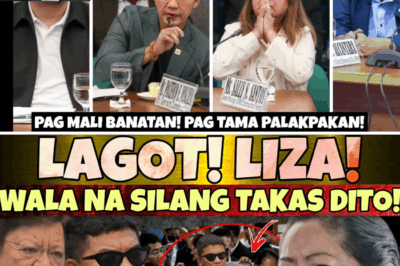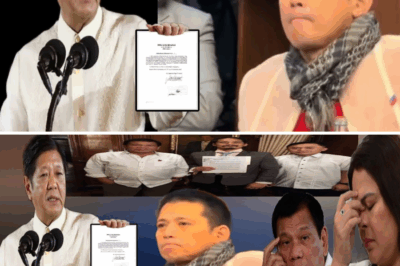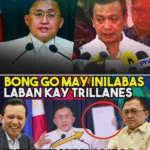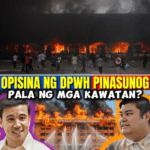A sudden blaze at the Department of Public Works and Highways’ Bureau of Research and Services has set off alarms across government watchdog circles and the public alike. On October 22, flames tore through a key DPWH facility in Quezon City while investigators were probing alleged irregularities in flood-control projects. The timing—right in the middle of a corruption inquiry—prompted Ombudsman Boying Crispin Remulla to take immediate and public action: he asked the National Bureau of Investigation (NBI) and the Bureau of Fire Protection (BFP) to determine whether the fire was deliberate.

“I am asking the NBI and the BFP to check if there’s arson, if it was intentionally burned or an accident,” Remulla said bluntly. His brief but forceful statement acknowledged two uneasy realities: the government must be seen to protect evidence in ongoing probes, and any perception that a blaze might be a tool for obstruction risks eroding public trust.
The Ombudsman’s concern was straightforward. The Bureau of Research and Services is tasked with testing materials and keeping technical reports that underpin DPWH procurement and quality control. In literal terms, its files and databases can contain the technical trail any investigator would need to assess whether flood-control projects were properly contracted and built. Even with digital backups, the loss or tampering of physical or electronic records can delay or derail accountability.
DPWH officials were quick to respond. At a press briefing following the fire, a female DPWH representative sought to allay fears that crucial documents tied to the flood-control probe were destroyed. “I can attest that we have no documents related to the projects under investigation,” she said, noting that the records damaged were routine validation reports from the Bureau of Research. “In general, no documents pertaining to the issues being discussed now were affected,” she insisted.
The DPWH explanation is plausible on its face: offices often store working papers that are not central to a formal investigation, and agencies routinely maintain central archives or electronic backups. Yet in an environment where public suspicion runs high—especially around big-ticket infrastructure projects—assurances alone rarely quiet the terrain of doubt. The Ombudsman’s office made this clear: investigators should still determine whether the fire was accidental or intentional, and whether any chain-of-custody protocols were breached.
Remulla’s call to the NBI and BFP marks a healthy, precautionary step. Fire forensics can reveal key details: whether accelerants were used; whether multiple ignition points existed; whether the electrical pattern matches a simple computer malfunction; and whether the incident shows signs of tampering aimed at destroying files. Likewise, digital forensics can trace whether files were altered, deleted, or transferred before the blaze. A rigorous, transparent investigation—followed by a public report—could help either restore confidence or expose deeper problems.
But the fire is only one strand of a wider controversy that has inflamed public opinion. Critics and commentators have also targeted political figures, among them Senator Bong Go, whose name has been embroiled in allegations tied to contractors and potential conflicts of interest. The contractor at the center of recent scrutiny reportedly operates under the name CLTG Builders—initials that some allege match Senator Go’s full name, Christopher Lawrence Tesorogo Go. The senator has denied any involvement.
“He said he has no involvement there,” a commentator summarized. “He is ready to sue his relative. He doesn’t want to say ‘family,’ he says ‘relative.’ Is your father and sibling not your family?” The tone of the criticism underscores a deeper anxiety: even the hint of familial or political ties to contractors bidding for public works can undermine the perceived fairness of procurement.
Political accountability experts stress that if public officials or their close relatives have any interest—direct or indirect—in contractors bidding on government projects, the proper response is unequivocal transparency: voluntary recusal, disclosure, and a firewall to prevent conflicts of interest. “If he really had no involvement, he could have told the DPWH: ‘Do not give projects to my family, my sibling, my father. You will be held accountable to me. That is a conflict of interest and they are using my name,’” a critic said. The suggestion reflects a broader expectation: public servants should proactively eliminate even the appearance of impropriety.
This scandal comes against a backdrop of long-standing concerns about “anomalous” or “ghost” projects—construction contracts that are allegedly overpriced, uncompleted, or improperly documented. In flood-prone areas, well-funded but low-quality flood-control infrastructure can have tragic consequences when it fails to perform during extreme weather events. That makes a sound, transparent investigative trail not just a matter of pursuing corruption, but of ensuring public safety.
The DPWH has attempted to show it is not hiding anything. Aside from the public statement that no critical investigation documents were lost, the agency has agreed to cooperate with fire and criminal investigators. The Ombudsman similarly pledged to prevent any attempt to “stifle” the probe, warning against using the fire as “an excuse to evade responsibility.”
Still, the optics are difficult to overcome. Fires in government units at sensitive moments tend to fuel conspiracy theories—especially when the records involved relate to high-value infrastructure contracts. Memories of past incidents—warehouses burned during customs probes, servers going offline during data requests—heighten skepticism. In such cases, what matters most is a transparent, timely, and comprehensively reported inquiry that leaves little room for speculation.
What should the public expect next? First, a forensic report from the BFP and a criminal probe by the NBI. For the sake of credibility, those findings should be released in full, with technical appendices that explain methods and evidence. Second, an independent audit of affected DPWH project files and procurement records—preferably overseen by an impartial body—could determine whether anomalies exist and whether any data loss materially affected the investigation. Third, clear disclosures by public officials about any familial or business ties to contractors should be required and made public.
The stakes are high. If the fire was accidental, investigators can put that concern to rest with definitive evidence and restore trust. If it was intentional, the consequences would be grave—criminal charges for arson and obstruction, and a wider probe into who benefitted from any destroyed records. Either way, the episode is a test of institutional integrity: can agencies respond transparently, or will partisan friction and public suspicion erode confidence further?
At its core, this episode is more than a news item about a building fire. It’s a reminder of why robust records, clear procurement rules, and impartial oversight matter. When flame threatens data, the public’s right to know becomes literal: what was lost, what was saved, and who, if anyone, stands to gain from the smoke. The NBI, BFP, Ombudsman, and DPWH now have a narrow window to show their processes are trustworthy—and to prove that in a functioning democracy, nothing—not even a sudden conflagration—can be allowed to obscure accountability.
News
Paulo Avelino’s Quiet Gesture for Kim Chiu Melts Hearts: A Love Story Rooted in Consistency and Care
In an industry known for fleeting romances and scripted affection, actor Paulo Avelino continues to show that genuine love still…
Kathryn Bernardo on Alden Richards: “Yes, of course, I miss working with him” — Fans Stir as Reunion Talks Heat Up
Kathryn Bernardo’s latest interview may have lasted only a few minutes, but her words were enough to send fans into…
Basti Duterte Defends Father After ICC Denial as VP Sara Duterte Blasts Marcos for “Slow and Self-Serving” Anti-Corruption Efforts
The political divide within two of the country’s most powerful families — the Dutertes and the Marcoses — is now…
Complaint Filed Against First Lady Liza Marcos Amid “Ghost Project” Allegations as DPWH Office Catches Fire During Corruption Probe
In what many are calling a series of “unsettling coincidences,” a private citizen’s complaint linking First Lady Liza Araneta Marcos…
Senate Probes Death of NIA Researcher Who Exposed Alleged “Ghost Projects” — Officials Deny Link to Current Administration
The Senate has opened a formal inquiry into the mysterious death of a young researcher from the National Irrigation Administration…
Kim Chiu’s Brother Confirms “KimPao” Family Bonding in Canada as Fans Defend Couple from New Wave of Online Hate
Just when Kim Chiu and Paulo Avelino thought they could enjoy a quiet moment with family abroad, the internet once…
End of content
No more pages to load












